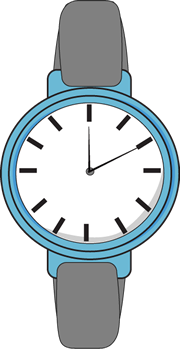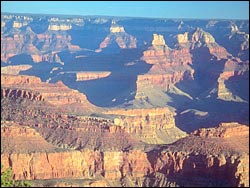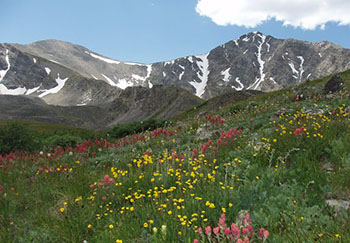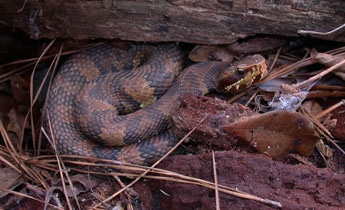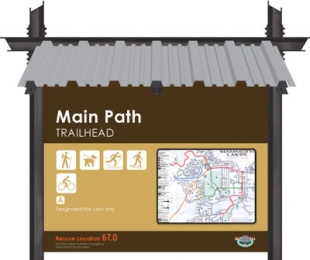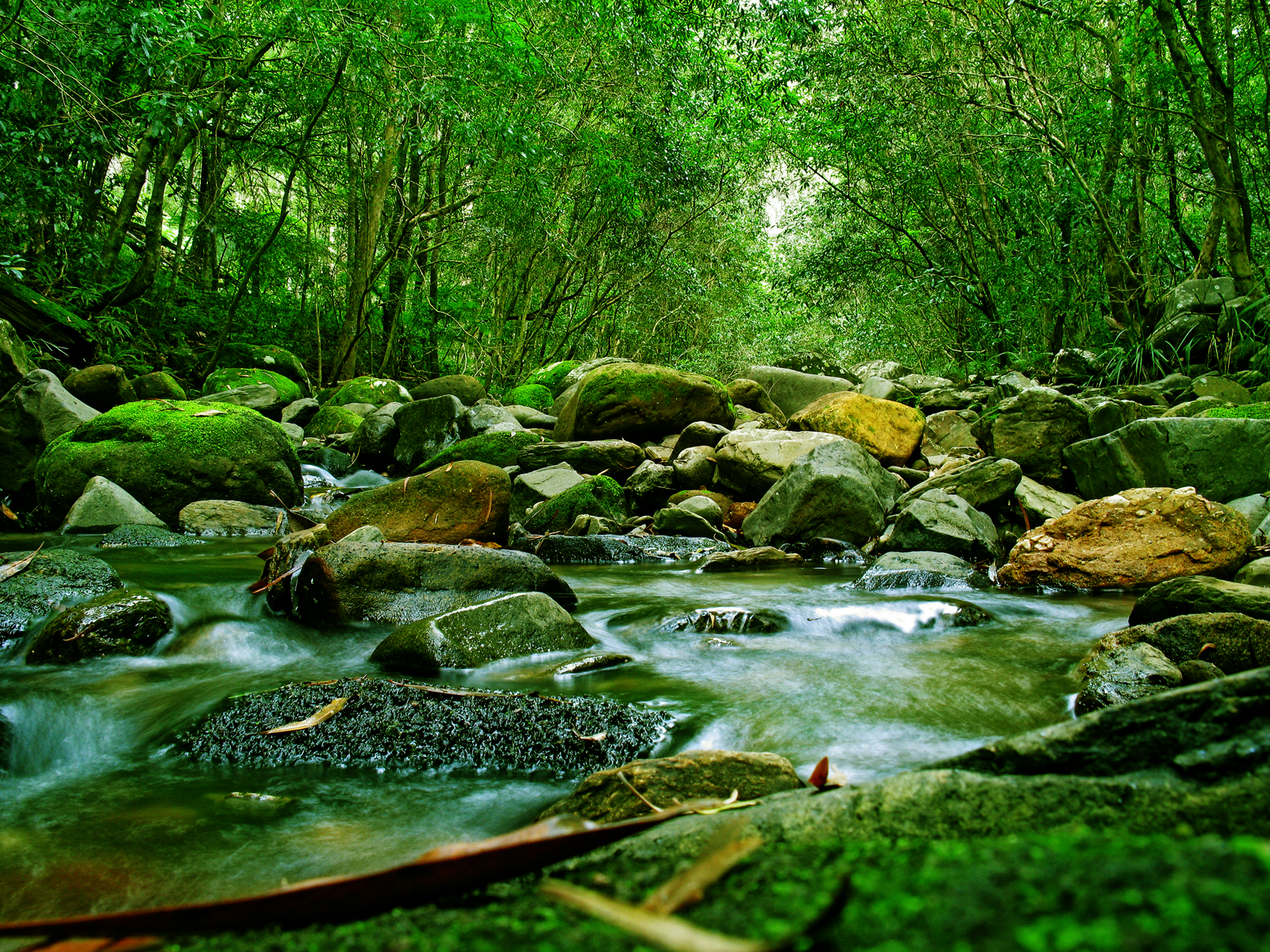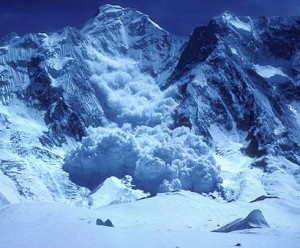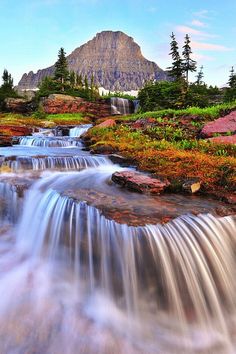Would You Survive Backpacking?

Backpacking is the outdoor recreation of carrying gear on one's back while hiking for more than a day. It is often but not always an extended journey, and may or may not involve camping outdoors. Just how capable are you to go on that backpacking trip with the guys? Take the test and find out!
- 1.
It’s day 8 of your thru-hike of southern Utah’s 812-mile Hayduke Trail, your water bottles are empty, and the map doesn’t show any springs on this high plateau. Now what? You have a cell phone and five bars. Which of the following are legitimate reasons to call for rescue? - See more at: http://www.backpacker.com/skills/beginner/winter-camping/quiz-would-you-survive/#sthash.2C1ijC1i.dpufIt’s day 8 of your thru-hike of southern Utah’s 812-mile Hayduke Trail, your water bottles are empty, and the map doesn’t show any springs on this high plateau. Now what?
- A.
Rest in the shade, then retrace your steps to the last available water once the sun goes down
- B.
Find a creekbed and start digging You’ll find the water table soon
- C.
Follow a cattle trail; it will always lead to water
Correct Answer
A. Rest in the shade, then retrace your steps to the last available water once the sun goes downExplanation
In this situation, it is important to conserve energy and avoid dehydration. Resting in the shade will help conserve energy and prevent overheating. Retracing your steps to the last available water once the sun goes down is a good strategy because the temperature will be cooler and it will be easier to hike back to the water source. This allows the hiker to replenish their water supply and continue their hike safely.Rate this question:
-
- 2.
You’re ready for the first rappel into a technical slot canyon, but the anchors mentioned in the route description aren’t there. Is this a problem?
- A.
No. Rap on using something else as an anchor, but make sure your cell phone is charged in case anything goes wrong
- B.
Not really. But first, check your bolt kit to be certain you have enough anchors to pound in wherever you might need them, and find a good spot to establish the start of your own route
- C.
Yes. Retrace your route until you find the anchors
Correct Answer
C. Yes. Retrace your route until you find the anchorsExplanation
Retracing the route until the anchors are found is the correct answer because if the anchors mentioned in the route description are missing, it indicates that there may be a problem or a mistake. It is important to have proper anchors for rappelling in order to ensure safety. Therefore, it is necessary to go back and search for the anchors before proceeding with the rappel.Rate this question:
-
- 3.
True or false? Hypothermia can be a risk in temps above 55°F
- A.
True
- B.
False
Correct Answer
A. TrueExplanation
Hypothermia can be a risk in temperatures above 55°F because it is a condition in which the body loses heat faster than it can produce, resulting in abnormally low body temperature. While it is more commonly associated with cold weather, it can still occur in warmer temperatures if a person's body is exposed to cold water or wet conditions for an extended period of time. Additionally, certain medical conditions or medications can make individuals more susceptible to hypothermia even in relatively mild temperatures. Therefore, it is important to be aware of the risk and take necessary precautions to prevent hypothermia, even in temperatures above 55°F.Rate this question:
-
- 4.
True or false? You can use your analog watch as a compass
- A.
True
- B.
False
Correct Answer
B. FalseExplanation
Analog watches cannot be used as compasses because they do not have the necessary features to determine direction. Compasses rely on a magnetic needle that aligns with the Earth's magnetic field to point north. Analog watches do not have this feature, as they only display the time using hour and minute hands. Therefore, it is not possible to use an analog watch as a compass.Rate this question:
-
- 5.
You’re hiking in the Grand Canyon in 95°F temps, and you’ve been drinking so much water your belly’s sloshing. Still, you feel weak and tired. What will help?
- A.
Eat a salty snack, take electrolyte tablets, and sip an energy drink
- B.
Nibble on some candy to keep your energy up
- C.
Keep drinking—it’s tough to stay hydrated in heat this severe
- D.
Rest in the shade with your feet above your heart
Correct Answer
A. Eat a salty snack, take electrolyte tablets, and sip an energy drinkExplanation
In extreme heat, excessive sweating can cause the body to lose not only water but also essential electrolytes. Drinking water alone may not be sufficient to replenish these electrolytes, leading to weakness and fatigue. Eating a salty snack, taking electrolyte tablets, and sipping an energy drink can help restore the electrolyte balance and provide the necessary energy to combat fatigue.Rate this question:
-
- 6.
You’re scrambling up a steep Colorado Fourteener in June. The moves are fairly easy, but it’s snowier than you expected, and you don’t have an ice axe or crampons. You should:
- A.
Keep going for a few pitches to check out the route, then retreat if it seems too tough
- B.
Go for it. The snow will soften in the sun as the day progresses, making the descent considerably safer
- C.
Glissade back down
- D.
Retreat via the least snowy, least technical route you can find
Correct Answer
D. Retreat via the least snowy, least technical route you can findExplanation
Retreating via the least snowy, least technical route is the best option in this situation. Without an ice axe or crampons, it would be unsafe to continue ascending the steep slope in snowy conditions. Retreating via a less snowy and less technical route would minimize the risk of slipping or falling on the snow-covered terrain. It is important to prioritize safety and choose a route that is more manageable given the lack of proper equipment.Rate this question:
-
- 7.
A cottonmouth just sank its fangs into your girlfriend’s ankle. After calming her, you should immediately: A cottonmouth just sank its fangs into your girlfriend’s ankle. After calming her, you should immediately - See more at: http://www.backpacker.com/skills/beginner/winter-camping/quiz-would-you-survive/2/#sthash.vTDD9oDi.dpuf
- A.
Tie a tourniquet just below her knee to keep the poison from reaching the heart
- B.
Make a deep X cut at the site of the bite and start sucking
- C.
Have her do jumping jacks to work the venom out of her system
- D.
Keep her lying down and calm, and send for help
- E.
Attach a suction-cup venom extractor and pump away
Correct Answer
D. Keep her lying down and calm, and send for helpExplanation
When someone is bitten by a venomous snake, it is important to keep them lying down and calm. Moving around or doing jumping jacks can increase blood flow and spread the venom faster. Tying a tourniquet or making deep cuts at the bite site are not recommended as they can cause more harm. Using a suction-cup venom extractor is also not recommended as it may not effectively remove all the venom. The best course of action is to keep the person still and call for medical help as soon as possible.Rate this question:
-
- 8.
You’re at the trailhead, and the box for self-registration is empty. You haven’t told anyone where you’re going or how long you’ll be gone. Walk on?
- A.
Sure. John Muir never had anyone tracking him
- B.
Yep, but leave a note on your dashboard with your trip plan and expected return, and pack your cell phone
- C.
Not so fast. Visit or call the nearest ranger station first to report your expected route and return date
- D.
Yes, with caution. As a veteran hiker, you can count on years of backcountry experience. If you don’t get careless, you’ll be fine
Correct Answer(s)
B. Yep, but leave a note on your dashboard with your trip plan and expected return, and pack your cell pHone
C. Not so fast. Visit or call the nearest ranger station first to report your expected route and return dateExplanation
The correct answer suggests that it is important to inform someone about your trip plan and expected return before embarking on the trail. Leaving a note on the dashboard with this information and carrying a cell phone can help in case of any emergencies. However, it is also recommended to visit or call the nearest ranger station to report your expected route and return date for added safety measures. This ensures that someone is aware of your whereabouts and can take necessary actions if needed.Rate this question:
-
- 9.
You just hiked to 11,000 feet. After pitching camp, you developed a pounding headache. What’s the cure for this classic case of altitude sickness?
- A.
Guzzle a liter of water
- B.
Do some light exercise around camp to get your respiration and heart rate up
- C.
Break camp and descend to a lower elevation before sleeping
- D.
Take 200 mg of ibuprofen
- E.
A and B
- F.
A, B, and C
Correct Answer
F. A, B, and CExplanation
Altitude sickness is caused by the body's inability to adjust to the lower oxygen levels at higher elevations. Drinking a liter of water helps to hydrate the body and alleviate symptoms. Doing light exercise increases respiration and heart rate, improving oxygen intake. Descending to a lower elevation allows the body to adjust to the oxygen levels and helps relieve symptoms. Taking 200 mg of ibuprofen can also help alleviate the headache associated with altitude sickness. Therefore, the combination of drinking water, doing light exercise, and descending to a lower elevation is the best cure for altitude sickness.Rate this question:
-
- 10.
Assume spinal injury and immobilize an injured patient whenever he or she:
- A.
Has taken a long tumble
- B.
Feels numbness in extremities
- C.
Feels back or torso pain
- D.
Has been knocked out from a serious blow to the head
- E.
All of the above
Correct Answer
E. All of the aboveExplanation
The correct answer is "All of the above." This means that in all of the mentioned situations, it is necessary to assume spinal injury and immobilize the injured patient. Taking a long tumble, experiencing numbness in extremities, feeling back or torso pain, or being knocked out from a serious blow to the head can all potentially indicate spinal injury. Immobilizing the patient in these cases is important to prevent further damage to the spinal cord and to ensure their safety during transportation to a medical facility.Rate this question:
-
- 11.
You suddenly realize you’re lost in deep forest. What’s the way out of this fix?
- A.
Follow the closest creek downstream until it meets a river, because rivers always lead to civilization
- B.
Find shelter, stay warm and dry, and wait for rescue
- C.
Note your location and surrounding landmarks carefully, then retrace your steps to the last point where you knew you were on route
- D.
Call 911 for directions on your cell phone
Correct Answer
C. Note your location and surrounding landmarks carefully, then retrace your steps to the last point where you knew you were on routeExplanation
In a deep forest, it can be difficult to find your way out. However, noting your location and surrounding landmarks carefully is the best course of action. By doing this, you can gather information about your surroundings and retrace your steps to the last point where you knew you were on route. This method increases the chances of finding your way back to a familiar area or path, ultimately leading you out of the forest.Rate this question:
-
- 12.
The most common avalanche snow condition is
- A.
Hard-packed snow
- B.
Wet slush
- C.
Old wind crust
- D.
Fresh, wind-drifted snow
Correct Answer
D. Fresh, wind-drifted snowExplanation
Fresh, wind-drifted snow is the most common avalanche snow condition because it is unstable and prone to sliding. When snow is freshly fallen and has been blown by the wind, it forms deep drifts and accumulates in unstable layers. These layers can easily break loose and slide down a slope, causing an avalanche. This type of snow condition is particularly dangerous for backcountry skiers and mountaineers as it is difficult to predict and can easily be triggered by human activity.Rate this question:
-
- 13.
While crossing a class III pass, you encounter a cliff that requires sketchier rock-climbing moves than you expected. Still, you’ve been doing this stuff for a decade. What now?
- A.
Look for a route that avoids the hazard, or turn back
- B.
Buck up and climb on, Dean. Two minutes, and you’ll be in the clear
- C.
Make a cell call to your spouse and tell her what you’re going to try
- D.
Rig a safety line with tent cord or your bear-bagging rope
Correct Answer
A. Look for a route that avoids the hazard, or turn backExplanation
The correct answer is to look for a route that avoids the hazard or turn back. This option prioritizes safety and acknowledges that the rock-climbing moves are sketchier than expected. It is important to assess the situation and make a decision based on the level of risk involved. By looking for an alternative route or turning back, the individual can avoid potential danger and ensure their own well-being.Rate this question:
-
- 14.
What’s the most dangerous animal in the wilderness?
- A.
Grizzly bear
- B.
Rattlesnake
- C.
Wasp
- D.
The one in your mirror
- E.
Wasp
- F.
Wild hog in heat
- G.
Another human
Correct Answer
D. The one in your mirrorExplanation
The answer "The one in your mirror" suggests that the most dangerous animal in the wilderness is oneself. This implies that humans, with their ability to reason and make conscious choices, can be more dangerous than any wild animal. It highlights the potential for humans to cause harm, either intentionally or unintentionally, due to their actions and decisions.Rate this question:
-
- 15.
You’re in the middle of a long desert hike, days from your car. You’re stoveless, your water filter broke hours ago, and you’re gazing down at a nasty cattle pond. It’s decision time. Pick one:
- A.
Drink up and fill all of your bottles
- B.
Chop open a cactus and wring the water from it
- C.
Suck on some hard candy until you find the next water hole, because the fetid water will surely make you sick
- D.
Look for birds, which usually nest near potable water
Correct Answer
A. Drink up and fill all of your bottlesExplanation
In this scenario, the best option is to drink up and fill all of your bottles with the water from the cattle pond. Although the water may be unpleasant and potentially contaminated, it is crucial to stay hydrated in a desert environment. Dehydration can lead to serious health issues and even death. It is important to take the risk of drinking the water rather than risking dehydration.Rate this question:
-
- 16.
A violent lightning storm is bearing down on your high-meadow campsite. You should immediately
- A.
Grab your trekking poles and stab them into the dirt to ground yourself
- B.
Look for a rock overhang to hide under
- C.
Leave your tent for a low, sheltered spot away from tall trees, and crouch on your sleeping pad
- D.
Have everyone move downhill and separate from one another
Correct Answer(s)
C. Leave your tent for a low, sheltered spot away from tall trees, and crouch on your sleeping pad
D. Have everyone move downhill and separate from one anotherExplanation
In a violent lightning storm, it is important to prioritize safety and minimize the risk of being struck by lightning. Leaving the tent and finding a low, sheltered spot away from tall trees reduces the chances of being hit by lightning. Crouching on a sleeping pad provides some insulation from the ground. Having everyone move downhill and separate from one another further reduces the risk as lightning tends to strike the highest point in an area. By following these actions, individuals can increase their safety during a lightning storm.Rate this question:
-
- 17.
It’s broiling out, and your friend just collapsed trailside. He’s not sweating, but it’s clear from feeling his forehead that his body temperature is well above normal. What’s the problem?
- A.
Heat exhaustion
- B.
Dehydration
- C.
Heatstroke
- D.
Nothing (he’s faking to buy some break time)
Correct Answer
C. HeatstrokeExplanation
The correct answer is heatstroke. Heatstroke occurs when the body is unable to regulate its temperature and overheats. This can happen due to prolonged exposure to high temperatures or physical exertion in hot weather. Symptoms of heatstroke include a high body temperature, lack of sweating, confusion, dizziness, and loss of consciousness. It is a serious medical emergency that requires immediate attention and can be life-threatening if not treated promptly.Rate this question:
-
- 18.
Your canoe just swamped in remote Canadian rapids. The water is only chest-deep, but the current is very strong. You need to
- A.
Stand up and signal for help
- B.
Use your paddle to self-arrest
- C.
Swim toward the nearest log stretching across the river
- D.
Roll onto your back, and float feet-first downstream until you reach calmer water
Correct Answer
D. Roll onto your back, and float feet-first downstream until you reach calmer waterExplanation
Rolling onto your back and floating feet-first downstream until you reach calmer water is the correct answer because it is the safest option in this situation. The current is very strong, and attempting to swim against it could be dangerous and exhausting. By rolling onto your back and floating feet-first, you can use the current to your advantage and conserve energy. This technique allows you to navigate the rapids more safely and increases your chances of reaching calmer water where you can seek help or make a plan.Rate this question:
-
- 19.
Blood is pumping from your thumb after your salami knife slipped. Which of these procedures is not a recommended geyser-stopper?
- A.
Apply a bandage
- B.
Apply direct pressure on the wound
- C.
Apply a tourniquet
- D.
Hold your thumb up in the air high above your heart
Correct Answer
C. Apply a tourniquetExplanation
Applying a tourniquet is not a recommended geyser-stopper for a bleeding thumb. A tourniquet is typically used as a last resort for severe bleeding that cannot be controlled by other means. In this case, the bleeding from the thumb can be effectively stopped by applying direct pressure on the wound or by applying a bandage. Holding the thumb up in the air above the heart can also help reduce blood flow to the area. However, using a tourniquet for a thumb injury is excessive and can cause further damage or complications.Rate this question:
-
- 20.
The most common cause of wilderness fatality is
- A.
Avalanche
- B.
Fall
- C.
Hypothermia
- D.
Wasp or bee sting
Correct Answer
B. FallExplanation
The most common cause of wilderness fatality is a fall. Falls can occur due to various reasons such as slipping on uneven terrain, losing balance while climbing or hiking, or falling from heights. In wilderness settings, there are often rugged terrains and challenging conditions, increasing the risk of falls. Falls can result in severe injuries or even death, especially if medical help is not readily available. It is crucial for individuals venturing into the wilderness to be cautious, use appropriate safety equipment, and be aware of their surroundings to prevent falls and minimize the risk of fatalities.Rate this question:
-
- 21.
The best way not to get lost is
- A.
Carry a map and know how to read it
- B.
Carry a compass and know how to use it
- C.
Start with a plan and a good route description
- D.
All of the above
Correct Answer
D. All of the aboveExplanation
The best way not to get lost is to be prepared and have multiple tools at your disposal. Carrying a map and knowing how to read it allows you to navigate your surroundings and find your way. Having a compass and knowing how to use it can help you determine directions and stay on track. Starting with a plan and a good route description helps you have a clear path to follow and reduces the chances of getting lost. Therefore, all of the above options are the best ways to avoid getting lost.Rate this question:
-
- 22.
True or false? The best practice when fording rivers that are more than calf-deep is to keep your sternumstrap and hipbelt buckled. If you fall in, you’ll need the pack’s buoyancy to keep you at the surface until you can swim to safety
- A.
True
- B.
False
Correct Answer
B. FalseExplanation
The correct answer is False. When fording rivers that are more than calf-deep, it is actually recommended to unbuckle both the sternum strap and hip belt. This is because if you fall in, having the pack attached to you can make it harder to swim and can increase the risk of getting trapped or pulled underwater. By unbuckling the straps, you can easily and quickly remove the pack if needed and swim to safety more effectively.Rate this question:
-
- 23.
What is the single best way to prevent hypothermia?
- A.
Dress in several warm layers
- B.
Eat hearty snacks every 30 minutes
- C.
Pound some hot buttered rum
- D.
Never let yourself get wet, either from snow or sweat
Correct Answer
D. Never let yourself get wet, either from snow or sweatExplanation
The best way to prevent hypothermia is by never letting yourself get wet, either from snow or sweat. When our body gets wet, especially in cold temperatures, it loses heat much faster, increasing the risk of hypothermia. Wet clothing or being in wet conditions can rapidly lower body temperature and lead to dangerous health complications. Therefore, ensuring that you stay dry by avoiding wet environments or changing into dry clothes when necessary is crucial in preventing hypothermia.Rate this question:
-
- 24.
While we’re at it, what should you wear to prevent hypothermia?
- A.
Waterproof/breathable rain suit
- B.
Warm gloves
- C.
A warm hat
- D.
A thick parka
Correct Answer
A. Waterproof/breathable rain suitExplanation
A waterproof/breathable rain suit is the correct answer because it provides protection against moisture and allows for ventilation, preventing the body from getting wet and retaining heat. This is important in preventing hypothermia, as wet clothing can lead to rapid heat loss from the body. Additionally, a rain suit is lightweight and easy to move in, making it a practical choice for outdoor activities in wet and cold conditions.Rate this question:
-
- 25.
You and your partner just climbed to high camp on Kilimanjaro and now he’s having difficulty breathing. You listen to his lungs and hear a bubbling, crackling sound when he exhales. He probably has:
- A.
A chest cold. He should rest and take aspirin for fever
- B.
Asthma. He’s probably allergic to something nearby
- C.
Pulmonary edema. Descend immediately before he’s incapacitated
- D.
Pneumonia. Give him antibiotics (you packed them, right?)
Correct Answer
C. Pulmonary edema. Descend immediately before he’s incapacitatedExplanation
Based on the symptoms described, such as difficulty breathing and the bubbling, crackling sound heard during exhalation, it is likely that the person is experiencing pulmonary edema. Pulmonary edema is a condition where fluid accumulates in the lungs, making it difficult to breathe. It is a serious condition that requires immediate medical attention. Descending from high altitude is important to alleviate the symptoms and prevent further complications. Rest and aspirin for fever would not be sufficient in this case, as it is a more severe condition than a chest cold. Asthma and pneumonia are also less likely explanations based on the symptoms provided.Rate this question:
-
- 26.
Halfway into a weeklong hike in Glacier National Park, you and your buddy have lost the trail. What’s your next move?
- A.
Shortcut cross-country back toward the path, to avoid wasting daylight.
- B.
Retrace your steps to your last known landmark
- C.
Stop, pitch your tent, and start signaling for help
- D.
Climb to the top of the highest nearby peak to get a better view
Correct Answer
B. Retrace your steps to your last known landmarkExplanation
Retracing your steps to your last known landmark is the next logical move because it allows you to backtrack and find the point where you went off the trail. This will help you regain your bearings and navigate back onto the correct path. It is a safer option than taking a shortcut cross-country, which can lead to further disorientation and potentially getting more lost. Pitching your tent and signaling for help should be a last resort if you are unable to find your way back, and climbing to the top of the highest peak may not be necessary if you can retrace your steps effectively.Rate this question:
-
- 27.
You have a cell phone and five bars. Which of the following are legitimate reasons to call for rescue? (Choose all that apply)
- A.
You’re lost on day 2 of a 5-day backpack
- B.
You fell 15 feet, got knocked out, then woke up woozy and confused
- C.
Your hiking companion dislocated his shoulder. It’s back in now, and pretty sore, but it works OK
- D.
Just before dark, your 6-year-old brother wandered away from camp. You can’t find him, and rain has started falling
- E.
Your new boyfriend was showing off when he pitched over a cliff with a full pack. He’s conscious, but his lower leg is crooked and he’s squealing in pain
Correct Answer(s)
B. You fell 15 feet, got knocked out, then woke up woozy and confused
D. Just before dark, your 6-year-old brother wandered away from camp. You can’t find him, and rain has started falling
E. Your new boyfriend was showing off when he pitched over a cliff with a full pack. He’s conscious, but his lower leg is crooked and he’s squealing in painExplanation
The legitimate reasons to call for rescue in this scenario are:
1) Falling 15 feet and getting knocked out, and waking up woozy and confused. This could indicate a head injury and the need for immediate medical attention.
2) Just before dark, your 6-year-old brother wandered away from camp and you can't find him. With the added complication of rain, it is important to seek help in locating and ensuring the safety of a young child.
3) Your new boyfriend fell over a cliff with a full pack, resulting in a crooked lower leg and intense pain. This situation requires medical assistance to address the potential fractures and provide pain management.Rate this question:
-
Quiz Review Timeline +
Our quizzes are rigorously reviewed, monitored and continuously updated by our expert board to maintain accuracy, relevance, and timeliness.
-
Current Version
-
Aug 31, 2023Quiz Edited by
ProProfs Editorial Team -
Dec 22, 2015Quiz Created by
Howmatthew
 Back to top
Back to top





